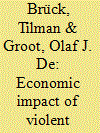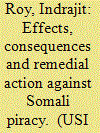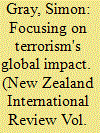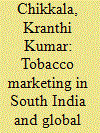| Srl | Item |
| 1 |
ID:
124517


|
|
|
|
|
| Publication |
2013.
|
| Summary/Abstract |
Much of the work published in Defence and Peace Economics (DPE) significantly contributes to our understanding of the economics of conflict. Analyzing the second decade of its existence, Arce and Kollias (2010) showed that over time, the emphasis of work in DPE has shifted significantly. One rising field examines the consequences of conflict. Related to this, in 2011, DIW Berlin hosted a conference examining The Economic Impact of Violent Conflict. This special issue is the result of that conference. While this may seem like a relatively narrow area, the interpretation of that simple combination of words can be quite broad. Some of the core work in the area focuses on the calculation of the global impact of conflict (Collier, 1999, Hess, 2003, Brück, De Groot, and Bozzoli, 2012). The work of Collier (1999) has had the greatest impact and continues to do so. He focuses only on civil conflicts because of the perceived economic strengthening effects of international conflict. Collier argues that civil conflict affects growth through (i) the destruction of resources; (ii) the disruption of infrastructure and social order; (iii)
budgetary substitution; (iv) dissaving; and (v) portfolio substitution by foreign investors.
The first four of these channels are expected to influence an economy only during conflict, whereas the final one is likely to continue having a lasting effect even after the restoration of peace. This led Collier to come to his theory that the length of the conflict is going to influence the impact of the post conflict period. In particular, he argues that long-running conflicts are more likely to be followed by an increase in growth, whereas short-lasting conflicts will suffer reduced growth rates over a longer period of time (known as a legacy effect).
|
|
|
|
|
|
|
|
|
|
|
|
|
|
|
|
| 2 |
ID:
117215


|
|
|
| 3 |
ID:
104788


|
|
|
| 4 |
ID:
174284


|
|
|
|
|
| Summary/Abstract |
In exploring the global impact of COVID-19, Adil Najam, professor of international relations at Boston University, took a novel approach. He did not restrict his analysis to the prism of geopolitics. Instead, he interviewed experts from different academic disciplines, regional areas and political perspectives for their insights into the pandemic’s impact on their field.
|
|
|
|
|
|
|
|
|
|
|
|
|
|
|
|
| 5 |
ID:
128879


|
|
|
|
|
| Publication |
2014.
|
| Summary/Abstract |
This article outlines macro-structures of tobacco production and marketing, mainly in Andhra Pradesh, taking a historical perspective. It discusses the emergence of a depot and auction system and other strategies to create more effective marketing conditions for this attractive but highly perishable agricultural produce. Identifying numerous management problems in tobacco leaf marketing, and responding to some indications of crisis, the article also highlights the potential for the emergence of an upper stratum of tobacco growers and their agents, as well as satisfactory employment conditions and more equitable participation of many stakeholders in the tobacco industry, including Dalits and women.
|
|
|
|
|
|
|
|
|
|
|
|
|
|
|
|